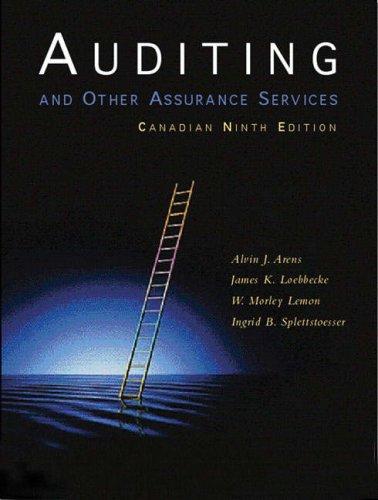The following questions deal with auditing year-end cash. Choose the best response. a. A public accountant obtains
Question:
The following questions deal with auditing year-end cash. Choose the best response.
a. A public accountant obtains a January 10 cutoff bank statement for a client directly from the bank. Very few of the outstanding cheques listed on the client's December 31 bank reconciliation cleared during the cutoff period. A probable cause for this is that the client
(1) sent the cheques to the payees after year end.
(2) has overstated its year-end bank balance.
(3) is engaged in kiting.
(4) is engaged in lapping.
b. The auditor should ordinarily mail confirmation requests to all banks with which the client has conducted any business during the year, regardless of the year-end balance, since
(1) the mailing of confirmation forms to all such banks is required by generally accepted auditing standards.
(2) the confirmation form also seeks information about indebtedness to the bank.
(3) this procedure will detect kiting activities that would otherwise not be detected.
(4) this procedure relieves the auditor of any responsibility with respect to non detection of forged cheques.
c. On December 31, 2001, a company erroneously prepared an accounts payable transaction (debit cash, credit accounts payable) for a transfer of funds between banks. A cheque for the transfer was drawn January 3, 2002. This resulted in overstatements of cash and accounts payable at December 31, 2001. Of the following procedures, the most effective in disclosing this misstatement would be review of the
(1) schedule of interbank transfers.
(2) December 31, 2001, bank reconciliation for the two banks.
(3) December 2001 cheque register.
(4) support for accounts payable at December 31,2001.
Step by Step Answer:

Auditing And Other Assurance Services
ISBN: 9780130091246
9th Canadian Edition
Authors: Alvin Arens, James Loebbecke, W Lemon, Ingrid Splettstoesser





